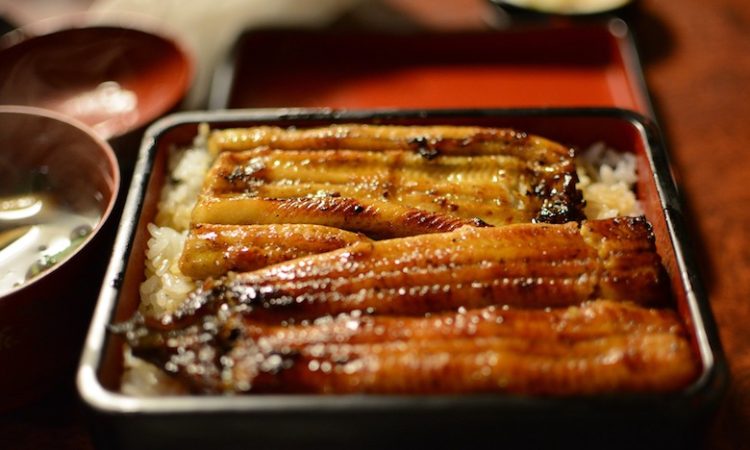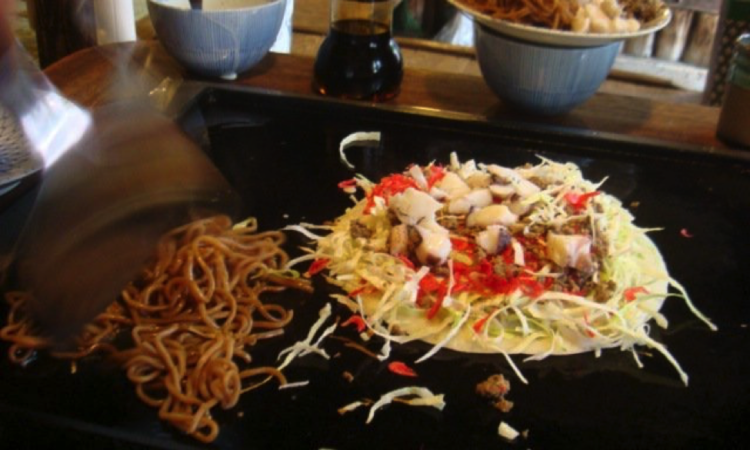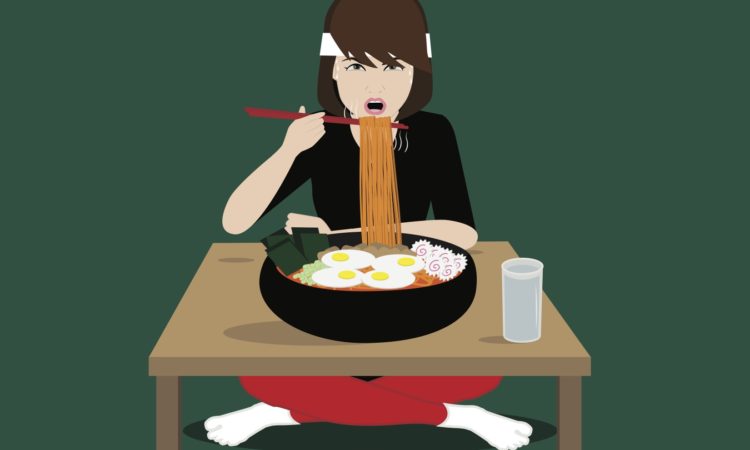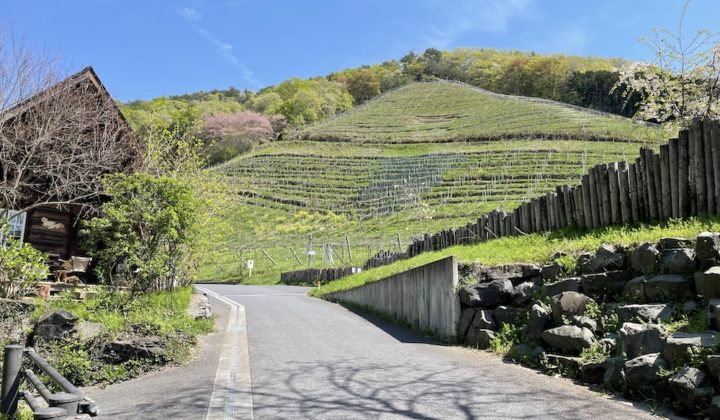Onigiri, fried chicken, pork buns, bento… conbini in Japan is definitely the heaven for all snack lovers with their delicious range of choices 24/7. To wash down the food, the accompaniment of a drink is important. What is your go-to drink in a conbini? For me, my must-buy item is definitely milk.
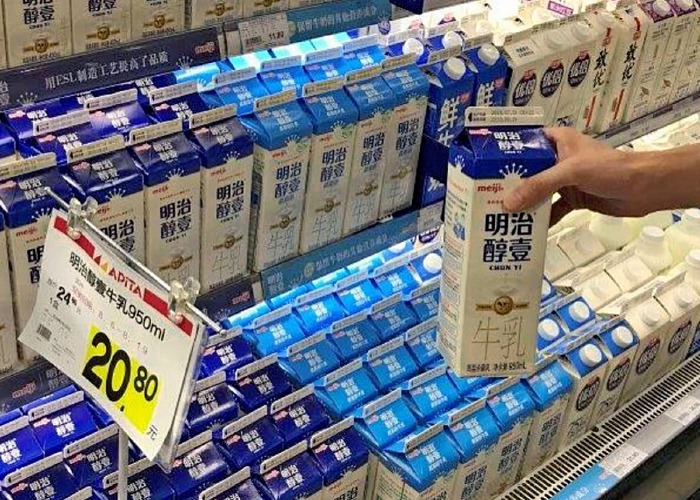
Yes, milk. Maybe it is not part of your culture to drink milk straight out of a carton, but in Japan it is normal to have a box of milk on the side of a meal, especially if you are a student. There is a big variety of milk available in Japan with different flavours, fat content, tastes and brands. Other than milk, there are also other dairy products like yogurt drinks, yogurt, cheese, and etc. that occupy quite a big space on the drinks rack, so it may be quite confusing with all those choices, especially all in Japanese. This will tell you everything you need to know about milk in Japan, as well as some history behind why it is so popular in the country!
Japan Milk Labels
In Japan, 100% pure milks are labelled 牛乳 (Gyuunyuu). If it says ミルク (Milk), it is usually a 乳製品 (Nyuu-seihin) which means dairy product, like yogurt or ice cream, or a 乳飲料 (Nyuu-inryou) which is a milk drink with additives like カルシウム (calcium) and 鉄 (iron) that is not dairy, also flavoured milk or coffee. 加工乳 (Kakou-nyuu) refers to processed milk, which is milk added with dairy products to alter its fat content, like low-fat milk powder or cream. 低脂肪牛乳 (Teishibou-gyuunyuu) is low-fat milk which has around 0.5%-1.5% fat content, where 無脂肪牛乳 (Mushibou-gyuunyuu) is non-fat milk with less than 0.5% of fat. There are also milk with extra milk fat added to about 4.4%, and they are often labelled with 特濃 (Tokunou) or 濃厚 (Noukou), which means extra thick. Some of these extra creamy milks may be produced from specific cow breeds that are uncommon. 生乳 (Seinyuu) means the milk is not processed and therefore pure milk with no sterilisation.

Usually pure milk will have a regular fat content of 3.6% and is labelled on the packaging. Either than that, there is a very user-friendly design for milk packaging in Japan. Since 2001, some milk producers have started including an indentation on the top of the milk carton as a sign for visually impaired customers to identify pure whole milk out of all the drinks with the same packaging. This is manufactured onto ones of 500mL and 1L, and it is only with some manufacturers.
For those who cannot read Japanese, it may be difficult for you to read nutrition information of the milk on the package. The most important to understand is 賞味期限 (Date of Expiry), which you should check before purchasing as you probably would not want to drink out of date milk. It is suggested by most brands of milk to finish the package of milk within 3 days of opening. Then for the nutrition information as following: エネルギー (Energy/Calories), たんぱく質 (Protein), 脂質 (Fats), and 炭水化物 (Carbohydrates). Minerals like 鉄 (Iron) and カルシウム (Calcium) should also be labelled.

Most milks come in carton packaging if purchased from a conbini or supermarket, but in some places like public baths and onsen, you may find glass bottled milk. The carton of the milk is made of anti-UV materials and is extra thick to minimise the effect of light to the contents inside. Designers even did experiments of different colours to test which gets the most effected, and results show white was the most affected and black was the least. Therefore, most companies have used dark navy blue, the closest colour to black for their packaging.
Which One Should I Choose?
The taste of each brand of milk is slightly different in their creaminess, sweetness and tastes. The main brands you would see in a conbini or supermarket are 明治 Meiji, 森永 Morinaga, 四葉 Yotsuba, or 雪印 Megmilk. Although, it depends on which region of Japan you are in, that you may find more local farms’ ones in places like Hokkaido. The main difference in all the big brands is the way they process the milk from raw to a product, as they have different pasteurising methods. This would determine how expensive the milk is too. For the ones from local farms, they differ from the breed of cows, the feed, water provided, as well as the season. Milk produced in wintertime are supposed to be creamier as the grass feed would be drier with a lower water content, and this increases the nutrients in the milk too. The taste of the milk should be similar for most regions in Japan if they are treated through the same process in the factory. Personally, I am a fan of Meiji’s おいしい牛乳. Meiji claimed that they have had multiple tests in the past to improve ways of lowering the oxygen content inside the milk, as oxidation causes a change in tastes which makes it less fresh. This is called “Natural taste manufacture” by Meiji, and they have used many years of development to achieve the taste they have now. It is probably the most common brand of milk available in the market, which you may find anywhere in Japan.
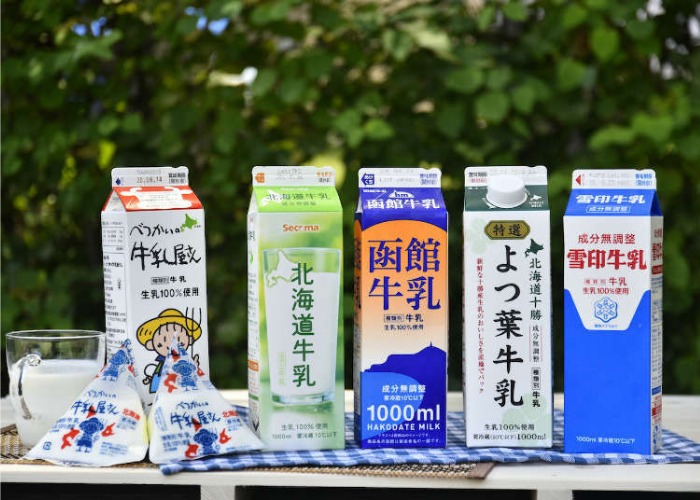
Hokkaido is said to have 53% of the Japanese milk production, but most of it is used for milk product like cheese and butter. If just purely for milk production, the Touhoku, north of Kantou and Kyushu have the highest ratio of all regions in Japan. Most milk farms in Japan are stall barns with limited space where cows would not be able to move around. The free-grazing cows or free stall barns are uncommon in Japan as they are inconvenient to maintain.
For those who are not a fan of drink straight milk, you may want to try flavoured milk in Japan. They are often called ミルク (Milk), and its flavour would be labelled in front of that. Fruit-flavoured milks are called フルーツミルク (Fruits milk). Common ones found are いちご (Strawberry), りんご (Apple), バナナ (Banana), チョコレート/ココア (Chocolate/Cocoa) and コーヒー (Coffee). They could be found in most stores, vending machines and in onsen or public baths. In the Showa period, not many families had bathtubs so people would go to public baths. Most families also could not afford having fridges, so milk was not commonly stored. To advertise milk, producers installed big fridges inside public baths around the country so everyone could buy milk there. This became very popular and has been kept as a tradition to drink a glass of milk after bathing. Try it next time if you do use one, cool milk tastes extra good after a hot bath, providing you with the lost water content as well as maintaining your blood pressure!
History of Milk in Japan
Drinking milk was not a culture in Japan until westernisation in the Meiji era. It was originally a drink for foreigners in Japan, and perhaps people with illnesses to improve health and females who could not provide breast milk. Then as the techniques of milking and pasteurising treatment methods developed, milk production started to grow. It was sold as the “sterilised milk” which came in glass jars. Milk farmers back in time were often warriors who had no techniques other than book knowledge or sword skills and there were no jobs available for them, as other farmers found it cruel to take away milk from the cows as they treated them like family.

The government had promoted the benefits of milk through advertisements which emphasised its nutrition values as a way to also improve Hokkaido’s economy by developing milk farms. Dairy is a great type of farming as it generates income despite the weather conditions. Yet, milk was still an expensive item to purchase by the major of the population, so the farmers cooperated with retailers in order deliver fresh milk to families to make it more convenient, as well as to promote better prices if milk purchases were subscribed. Milk was delivered by milkman of different producers, and customers may choose the package and type they would like from the catalogue. Though now milkman is no longer as popular as it was, it is still available in the market.
Why Does EVERYONE in Japan Drink Milk?
From 1954 onwards, the government agreed on the “School Lunch Regulation” where meals are to be provided for students in elementary to middle school. Though it was provided earlier around 1890s by some schools to provide children of poor family backgrounds the nutrients they lack from eating at home. However, this stopped around WW2 as there was a scarcity of sources. As that was when westernisation happened, milk was advertised as this “holy water” drink with tons of health benefits. There was also this slogan by the milk producers after war where they would say “A glass of milk to support a country.”, so it became very popular for everyone to drink. For a full meal in a Japanese school, it would be a set of bread, rice, milk and a dessert. Therefore, most Japanese grew up to drink milk as a part of their daily life. Good amount of protein, vitamins and minerals to support a child’s healthy growth.

However, around 80% Japanese people are actually lactose intolerant to different levels that they are not able to fully absorb the nutrients from milk properly, which may cause stomach-ache and indigestion. Most people are unaware of this because the amount they consume would only cause mild effects or unnoticeable ones. Though for those who have more serious allergic reaction, especially for children who have not developed their immune system fully, the lactose content within milk may be too high for them. Therefore, many children in schools actually pour away their milk away at school. More traditional Japanese people also think it is strange to combine Japanese rice with a rather Westernised drink, so there are voices which say milk should not be provided with the meal.
What is Your Favourite Milk in Japan?
Next time when you travel around different regions of Japan, check out different milk options at their local stores and the variety in flavours and tastes may surprise you!
Celia Li // Hong Kong

